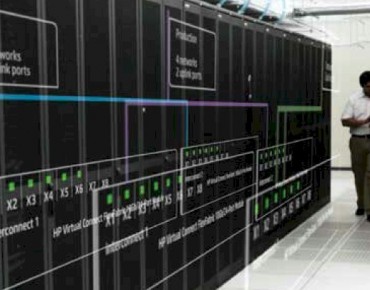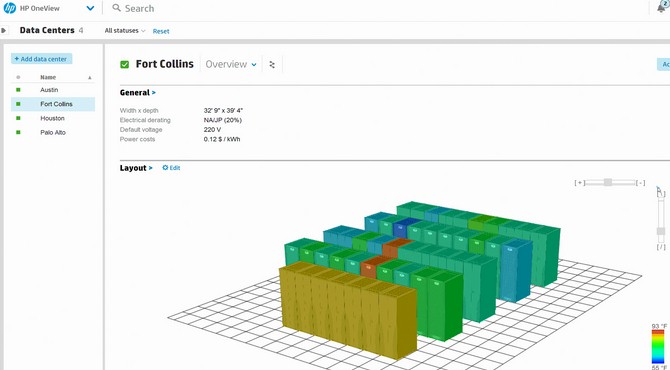HP OneView Management Tool Looks Consumer, Acts Datacenter

Hewlett-Packard has been pitching its next-generation of converged systems as the "new style of IT." If you are going to have systems that bring together servers, storage, and networking under the same chassis and rack skins, then you need a management tool that knows how to speak to those different bits of hardware. And so, HP has created a brand new tool, called OneView to configure and manage its various wares.
OneView is not to be confused with the legacy and legendary OpenView network management software, which was the cornerstone of HP's software business for many years. But the names are close enough that people are probably going to make mistakes. OpenView and a slew of other tools that HP got through its acquisitions of Mercury Interactive, Opsware, and Peregrine Systems a few years back have all been rebranded as the Business Technology Optimization portfolio. These tools are really designed for heterogeneous environments, meaning both HP and non-HP systems.
OneView is aimed specifically at the ProLiant Gen7 and Gen8 rack servers (the two most recent generations of systems) and BladeSystem blade servers (whose blades also come in Gen7 and Gen8 flavors). The new tool is designed to replace the existing Insight Control software that has roots in the Compaq server business as well as VirtualConnect Enterprise Manager for the virtual switches in BladeSystems and the code that runs on the Integrated Lights Out (ILO) Advanced system controller. HP will continue to support these existing tools for some time, of course, but the idea is that OneView is so much better and more modern that administrators will want to switch.
Jeff Carlat, director of converged systems product management at HP, tells EnterpriseTech that its BTO and other management frameworks from Computer Associates, IBM, and BMC Software will be able to plug into OneView through the REST APIs that make use of HTTP commands. This is a common method in the "DevOps" era to make systems management more programmatic and less manual as well as to integrate various tools together.
HP didn't just pull OneView out of thin air, says Carlat, but rather took its inspiration from mobile applications available on smartphones and tablets, which give you just enough information – but not too much – and then allow you to drill down deeper. The software has a console called Dashboard that can give you a status update on an entire data center.
Perhaps more importantly, unlike legacy system management tools, which have a tree and branch architecture that makes admins drill down and then back out to find issues with their systems, OneView takes its inspiration from Google with the Smart Search feature. This allows admins to search for any device under management or any kind of alert in the data center in one click rather than swinging from branch to branch on all those trees. Another feature called MapView shows the relationship between devices on the network and their status to help speed up troubleshooting. Here's a view from OneView showing the temperature of racks in one of HP's four data centers:
OneView also has an activity feed that keeps admins inside the tool, showing each other what they are doing and when, rather than relying on outside communication through instant message or email, as most admins do today. And, there is a templating system – there is always a templating system these days when it comes to configuration management – inside of OneView so the best practices of admins configuring specific pieces of iron can be replicated automatically and without human error as new iron is introduced into the data center.
The OneView management tool was developed with 30 different companies, including PayPal, eBay, Intuit, Bank of America, and JPMorgan Chase, who helped shape it. It has been put through the paces at more than 150 large organizations before coming to market this week.
Carlat bragged a bit about how much better OneView is compared to the tools it replaces, and said that using the old HP tools, it would take about 170 minutes to configure the server and BIOS settings, the arrays, and the networks of 16 blade server nodes to get them ready to be provisioned with VMware's ESXi server virtualization hypervisor. With OneView and its templating system, this time was cut down to 14 minutes.
And in an even larger-scale deployment scenario, a larger financial services firm (with over 250,000 employees) was rolling out a new call recording system in a dozen data centers on a slew of machinery. The IT department there estimated that it would take on the order of 66 days to configure the systems using HP's legacy tools, but using OneView, the company did it overnight in all of the data centers.
HP is also telling customers that OneView offers 42 percent lower total cost of ownership compared to its legacy tools, but that is a bit of an apples-to-applesauce comparison. This compares using OneView on BladeSystem blade servers (which have some virtual networking built in) to Insight Control and ILO Advanced running on rack systems (which do not).
OneView runs in a OVF-compatible virtual machine and will eventually be offered in a hardware appliance form based on one of HP's 2U ProLiant rack servers. Customers will be able to cluster two such appliances together for high availability. The virtual appliance can be clustered using whatever tools are available for that hypervisor.
At the moment, OneView is limited to monitoring up to 640 servers and their networking and storage, but Carlat says that HP is working on federating OneView controllers to scale infrastructure management "much, much higher." Carlat is not at liberty to say how far, but it has to be many thousands of nodes, and
maybe tens of thousands of nodes, to meet the needs of large-scale data centers.
There seems little question that HP will support OneView on its SL series of hyperscale servers, aimed at big Internet companies as well as HPC shops, as well as the Moonshot hyperscale microservers, which are aimed predominantly at enterprises but which will probably see some play in those other two sectors.
OneView costs $799 per rack server and $999 per blade server.











